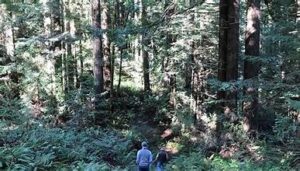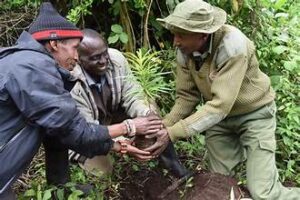
In the face of global environmental challenges, the role of local communities in transforming forestry practices has never been more critical. As we advance through 2024, the involvement of local stakeholders is proving to be a transformative force in sustainable forestry management. This article delves into how community engagement is reshaping forestry practices, highlighting innovative approaches and success stories that underscore the vital role of grassroots participation.
The Importance of Local Involvement in Forestry
Forestry management has traditionally been governed by top-down approaches, where decisions are made at higher administrative levels with limited input from local communities. However, the increasing recognition of local knowledge and the importance of community engagement has shifted this paradigm. Local involvement is not only enhancing the effectiveness of forestry practices but also fostering greater environmental stewardship and social cohesion.
Local knowledge and expertise: Communities living close to forested areas often possess invaluable knowledge about local ecosystems, species, and sustainable practices. This traditional knowledge complements scientific research and helps in crafting more nuanced and effective management strategies.
Enhanced compliance and monitoring: When communities are actively involved in forestry management, they are more likely to adhere to regulations and practices. Their vested interest in maintaining the health of their local environment ensures better monitoring and compliance.
Economic and social benefits: Involving local communities in forestry can create economic opportunities through sustainable practices like eco-tourism, non-timber forest products, and community-managed forest enterprises. Additionally, it strengthens community ties and builds resilience against environmental and economic shocks.
Innovative Approaches to Community Involvement
Recent developments in forestry practices showcase how innovative approaches are integrating local knowledge and participation. Here are some key strategies:
1. Community Forest Management (CFM)
Community Forest Management involves delegating the responsibility for managing forests to local communities. This approach empowers local stakeholders to make decisions regarding forest conservation, utilization, and restoration. Successful examples include:
- Nepal’s Community Forest Program: This program has demonstrated significant improvements in forest cover and biodiversity while providing local communities with resources and responsibilities for forest management. The program has also led to increased income opportunities through sustainable forest-based enterprises.
- India’s Joint Forest Management (JFM): Initiated in the 1990s, JFM involves local communities in the protection and management of forests. It has resulted in better forest conservation, reduced illegal logging, and enhanced livelihoods for participating communities.
2. Participatory Forest Monitoring
Participatory forest monitoring involves training local community members to monitor forest conditions and report changes. This approach ensures that data collection is grounded in local contexts and that communities have a direct role in managing their forests. Examples include:
- The Forest Watch Program in Cameroon: This initiative trains local villagers to use technology, such as GPS devices and smartphones, to track forest changes. Their observations contribute to national and international reporting on deforestation and forest health.
- The Rainforest Foundation’s Community Monitoring Systems: In various countries, this system engages local communities in tracking deforestation, land use changes, and illegal activities. Their data supports policy advocacy and enforcement efforts.
3. Indigenous-led Conservation Initiatives
Indigenous communities have long been stewards of their ancestral lands. Their deep cultural and spiritual connections to forests make them natural leaders in conservation efforts. Some notable initiatives include:
- The Amazon Sacred Headwaters Initiative: Indigenous groups in the Amazon are leading efforts to protect and restore vast tracts of rainforest, which are critical for global climate regulation and biodiversity. Their leadership is integral to the initiative’s success.
- The Indigenous Protected Areas (IPA) Program in Australia: This program supports Indigenous Australians in managing protected areas on their traditional lands. It combines traditional ecological knowledge with modern conservation techniques to enhance biodiversity and cultural heritage.
Challenges and Opportunities
While local involvement in forestry presents numerous benefits, it also comes with challenges that need to be addressed:
1. Capacity Building and Support
Local communities often require training and resources to effectively participate in forestry management. Capacity-building programs are essential for equipping community members with the skills and knowledge needed for effective forest stewardship.
2. Balancing Interests
Balancing the interests of various stakeholders, including local communities, government agencies, and private entities, can be challenging. Collaborative decision-making processes are crucial to ensuring that all voices are heard and that management strategies are equitable and sustainable.
3. Securing Funding
Sustainable forestry practices and community-led initiatives often require financial support. Governments, non-governmental organizations, and international bodies need to provide funding and resources to support these efforts.
Success Stories and Case Studies
1. The Forest Rights Act of India
This legislation has empowered tribal communities by recognizing their rights over forest land and resources. The Act has led to improved forest management, increased forest cover, and enhanced livelihoods for millions of people.
2. The Green Belt Movement in Kenya
Founded by Wangari Maathai, this grassroots organization focuses on tree planting and environmental conservation. The movement has mobilized local communities to plant millions of trees, combat deforestation, and promote environmental education.
3. The Conservation International’s Indigenous Leaders Program
This program supports Indigenous leaders in their efforts to protect forests and biodiversity. Through training, funding, and advocacy, the program has empowered Indigenous communities to play a leading role in global conservation efforts.
Looking Ahead: The Future of Community-Driven Forestry
As we move further into 2024, the integration of local communities into forestry management is expected to deepen. Emerging trends indicate a growing recognition of the value of local knowledge and the need for inclusive decision-making processes. Technology, such as remote sensing and digital platforms, will play an increasingly important role in supporting community-driven forestry efforts.
The future of forestry management will likely see a continued emphasis on collaboration, innovation, and empowerment. By leveraging local expertise and fostering strong community engagement, we can create sustainable and resilient forest ecosystems that benefit both people and the planet.
Conclusion
Empowering local communities is transforming forestry practices in profound ways. By incorporating local knowledge, enhancing compliance, and creating economic opportunities, community involvement is proving to be a cornerstone of sustainable forestry. As we continue to embrace these approaches in 2024 and beyond, the positive impact on our forests and communities will be undeniable. Through collaboration, innovation, and a commitment to shared stewardship, we can ensure a healthier, more sustainable future for our forests and the people who depend on them.


